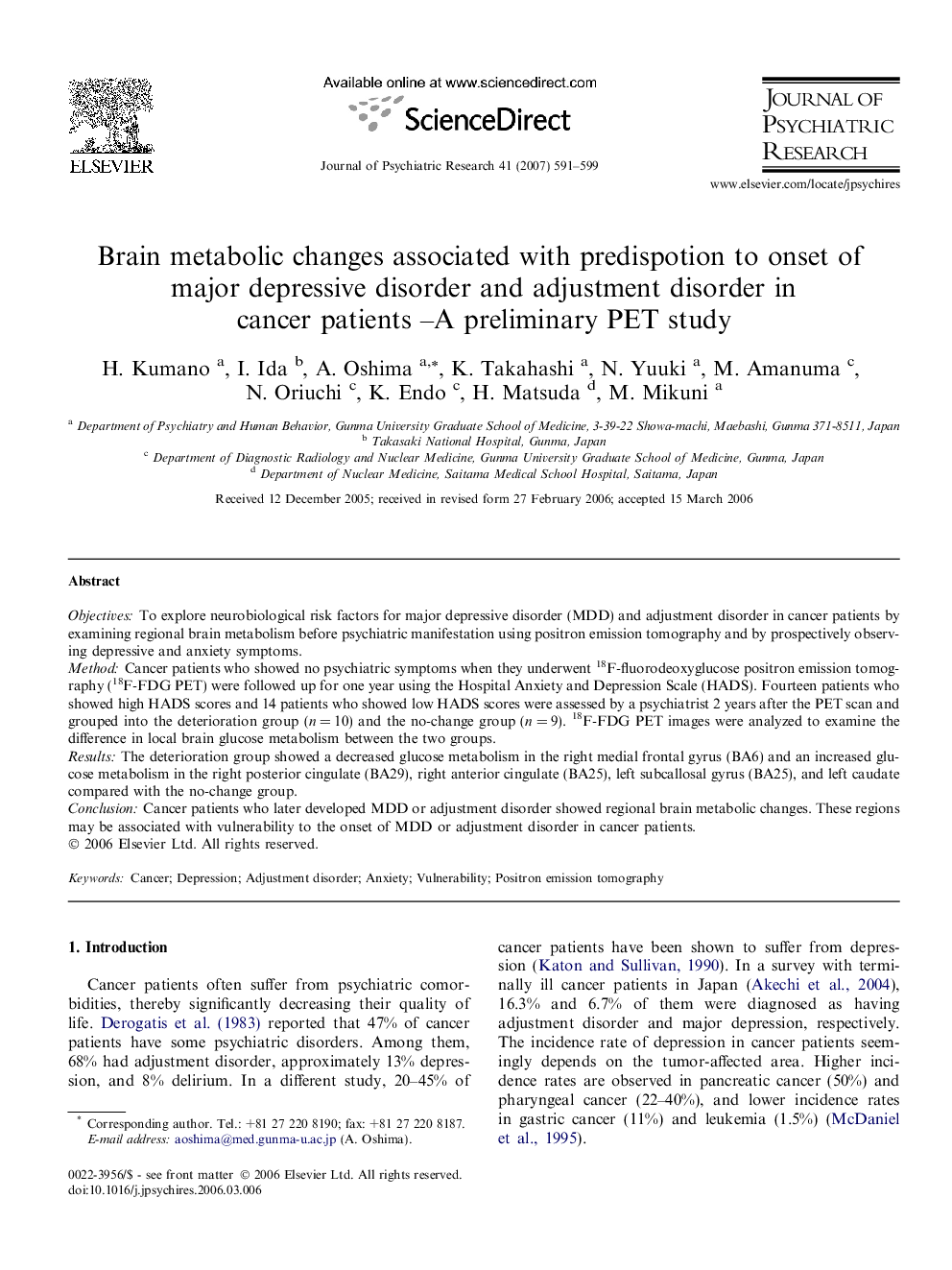| کد مقاله | کد نشریه | سال انتشار | مقاله انگلیسی | نسخه تمام متن |
|---|---|---|---|---|
| 327598 | 542937 | 2007 | 9 صفحه PDF | دانلود رایگان |

ObjectivesTo explore neurobiological risk factors for major depressive disorder (MDD) and adjustment disorder in cancer patients by examining regional brain metabolism before psychiatric manifestation using positron emission tomography and by prospectively observing depressive and anxiety symptoms.MethodCancer patients who showed no psychiatric symptoms when they underwent 18F-fluorodeoxyglucose positron emission tomography (18F-FDG PET) were followed up for one year using the Hospital Anxiety and Depression Scale (HADS). Fourteen patients who showed high HADS scores and 14 patients who showed low HADS scores were assessed by a psychiatrist 2 years after the PET scan and grouped into the deterioration group (n = 10) and the no-change group (n = 9). 18F-FDG PET images were analyzed to examine the difference in local brain glucose metabolism between the two groups.ResultsThe deterioration group showed a decreased glucose metabolism in the right medial frontal gyrus (BA6) and an increased glucose metabolism in the right posterior cingulate (BA29), right anterior cingulate (BA25), left subcallosal gyrus (BA25), and left caudate compared with the no-change group.ConclusionCancer patients who later developed MDD or adjustment disorder showed regional brain metabolic changes. These regions may be associated with vulnerability to the onset of MDD or adjustment disorder in cancer patients.
Journal: Journal of Psychiatric Research - Volume 41, Issue 7, October 2007, Pages 591–599